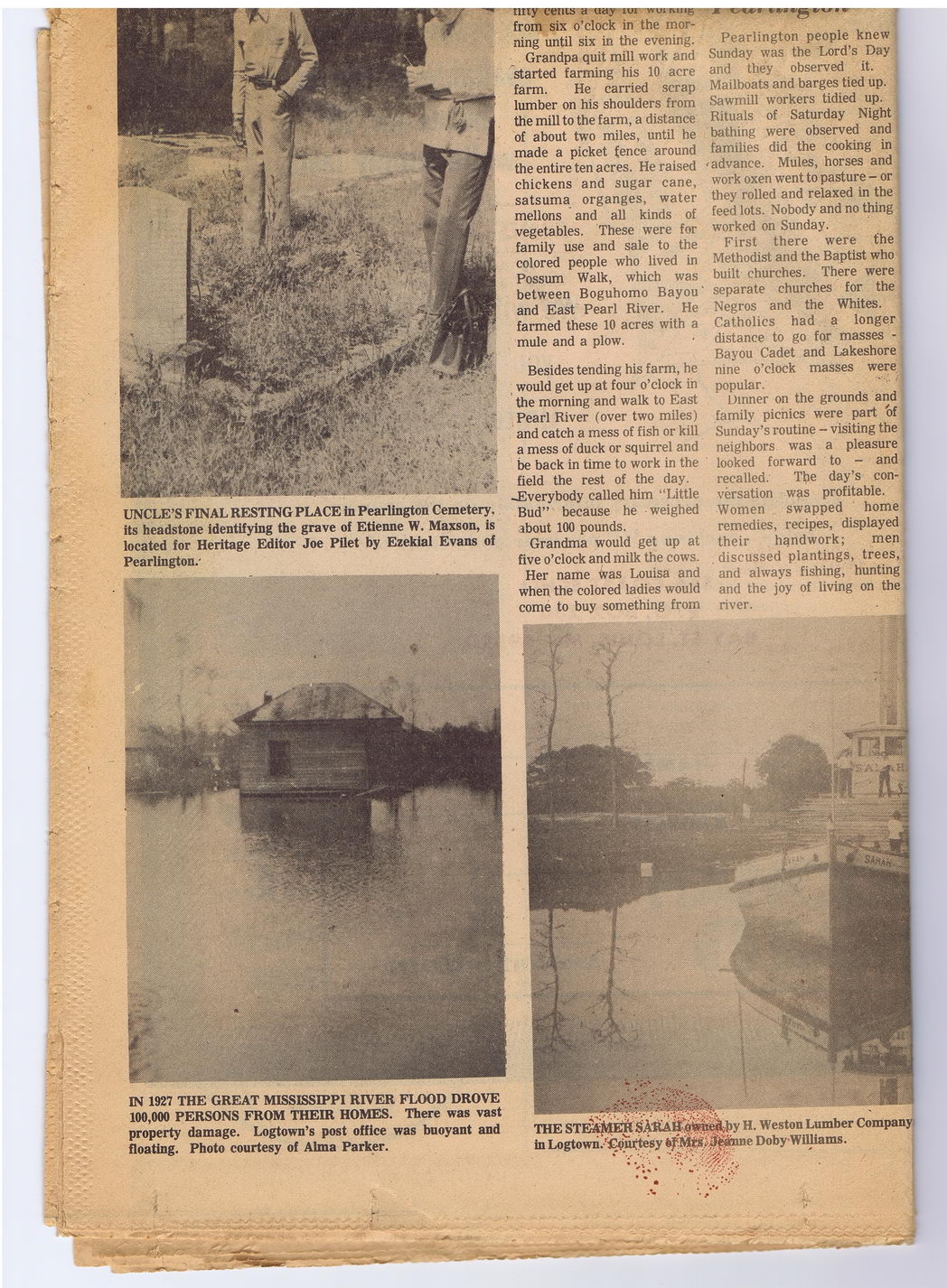This text was obtained via automated optical character recognition.
It has not been edited and may therefore contain several errors.
UNCLE’S FINAL RESTING PLACE in Pearlington Cemetery, its headstone identifying the grave of Etienne W. Maxson, is located for Heritage Editor Joe Pilet by Ezekial Evans of Pearlington.- ' ruty WfiiSTratiy ira- Truiniiig from six o’clock in the morning until six in the evening. Grandpa quit mill work and started fanning his 10 acre farm. He carried scrap lumber on his shoulders from the mill to the farm, a distance of about two miles, until he made a picket fence around the entire ten acres. He raised chickens and sugar cane, satsuma organges, water mellons and all kinds of vegetables. These were for family use and sale to the colored people who lived in Possum Walk, which was between Boguhomo Bayou' and East Pearl River. He farmed these 10 acres with a mule and a plow. Besides tending his farm, he would get up at four o’clock in the morning and walk to East Pearl River (over two miles) and catch a mess of fish or kill a mess of duck or squirrel and be back in time to work in the field the rest of the day. ^Everybody called him “Little Bud” because he weighed about 100 pounds. Grandma would get up at five o’clock and milk the cows. Her name was Louisa and when the colored ladies would come to buy something from ~b m i ■ »i Pearlington people knew Sunday was the Lord’s Day and they observed it. Mailboats and barges tied up. Sawmill workers tidied up. Rituals of Saturday Night bathing were observed and families did the cooking in 'advance. Mules, horses and work oxen went to pasture - or they rolled and relaxed in the feed lots. Nobody and no thing worked on Sunday. First there were the Methodist and the Baptist who built churches. There were separate churches for the Negros and the Whites. Catholics had a longer distance to go for masses -Bayou Cadet and Lakeshore nine o’clock masses were popular. Dinner on the grounds and family picnics were part frf Sunday’s routine - visiting the neighbors, was a pleasure looked forward to - and recalled. TJie day’s conversation was profitable. Women swapped home remedies, recipes, displayed their handwork; men discussed plantings, trees,, and always fishing, hunting and the joy of living on the river. IN 1927 THE GREAT MISSISSIPPI RIVER FLOOD DROVE 100,000 PERSONS FROM THEIR HOMES. There was vast property damage. Logtown’s post office was buoyant and floating. Photo courtesy of Alma Parker. THE ST^p^.’^A^i^tiy H. Weston Lumber Company in Logtown.’ijCo^irtesy fejPlM^S^^nne DobyWilliams.

Pearlington City Document (059)